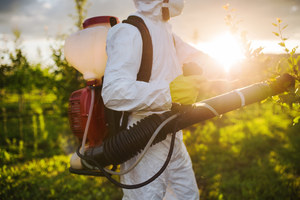 As Beyond Pesticides has previously reported, time and again, Bayer Monsanto is not welcome in Hawaii. On its website, the former National Coalition Against the Misuse of Pesticides calls for action:
As Beyond Pesticides has previously reported, time and again, Bayer Monsanto is not welcome in Hawaii. On its website, the former National Coalition Against the Misuse of Pesticides calls for action:“If you’re fed up with revolving door in Washington DC that lets chemical companies write and enforce their own rules, get active in your local community. Only grassroots action will bring these companies to account. Case in point, the present lawsuit was initiated because local advocates drove around cornfields taking pictures of publicly facing pesticide use report logs. A log indicating methyl parathion use was posted online, allowing others to identify the banned chemical, leading to EPA’s criminal investigation. Work to emulate these advocates: gather with friends and family, reach out to your state and local lawmakers, and fight back against toxic chemical use in your community.”
The Department of Justice on November 21, 2019 said that Monsanto sprayed Penncap-M, which contained the banned pesticide methyl parathion, on research crops in 2014, despite knowing that the Environmental Protection Agency prohibited its use after 2013, reported Reuters. Further, Bayer Monsanto said its employees entered the sprayed fields after seven days despite knowing it should have waited 31 days.
Methyl Parathion, the active ingredient in Penncap-M, was sprayed on corn seed and other crops on the Hawaii island of Maui back in 2014. The company also did this knowing that it was banned by the EPA the previous year.
Banned pesticides turn into hazardous waste. And Bayer Monsanto stored over 270 lbs of methyl parathion between the Hawaiian Islands of Maui and Molokai, without requesting and procuring the proper permits. This amount made the company a “Large Quantity Generator” of hazardous waste. The company also transported the waste, but failed to identify it as such on a shipping manifest.
For all this, Bayer Monsanto basically gets a finger wagging, and a fine that is pretty much chump change. Monsanto agreed to plead guilty to the spraying, a misdemeanor, and enter a deferred prosecution agreement for two felony counts of illegally storing “acute hazardous waste.”
The agrochemical giant will pay a paltry $10 million – a $6 million criminal fine and $4 million in community service payments to Hawaiian government entities. The government agreed to dismiss the felony charges in two years if Monsanto honors the agreement’s terms for two years, including maintaining an environmental compliance program at its Hawaii sites.
The company has defended the safety of its Roundup herbicide, saying health regulators around the world have concluded that glyphosate is not carcinogenic. Last month, Bayer said 42,700 plaintiffs claiming to have been exposed to Monsanto’s glyphosate-based products had sued the company in the United States as of Oct. 11, up from 18,400 three months earlier.
What is Methyl Parathion?
The World Health Organization (1996) classifies it as extremely hazardous (Class la) based or oral toxicity; the EPA gives it a Category 1 (highly toxic) and the EU rates it very toxic.
In a public health statement for Methyl Parathion, the Agency for Toxic Substances & Disease Registry (ATSDR), reports the following information is “important because exposure to this substance may harm you and because these sites may be sources of exposure.”
Methyl parathion is a pesticide that is used to kill insects on crops. Usually, it is sprayed on the crops. Methyl parathion comes in two forms: a pure form of white crystals and a technical-grade solution (brownish liquid), which contains methyl parathion (80%) and inactive ingredients in a solvent. The technical-grade methyl parathion smells like rotten eggs or garlic. Methyl parathion is a manufactured chemical, so it is found in the environment only as a result of its manufacture or use. Methyl parathion has been manufactured in the United States since 1952 and has been used to kill insects on many types of crops since this time. Because methyl parathion can be dangerous to humans, the EPA has restricted how it can be used and applied. Methyl parathion must be sprayed on crops from the air or from the ground in certain ways to minimize the danger of being exposed, and only trained people are allowed to spray methyl parathion.
The people who are at the greatest risk of being exposed to methyl parathion are those who work with this chemical, including farm workers. You can be exposed, if you eat food or drink water containing it; if you swim, bathe, or shower in contaminated water; if you touch recently sprayed plants or soil; if you touch contaminated soil near hazardous waste sites; or if you breathe air that contains methyl parathion, it goes into your body quickly and gets into your blood. From your bloodstream, methyl parathion goes to your liver, brain, and other organs.
Adults are Safe from Methyl Parathion Exposure but Not Children?
READ MORE ROUNDUP CANCER LEGAL NEWS
Can you think of a food crop only eaten by children that you, as an adult, would not eat?
Here is more information from the ATSDR:
“Children are affected by methyl parathion in the same manner as adults. Exposure to high levels of methyl parathion, even for short periods, may result in changes in the nervous system, leading to headaches, dizziness, confusion, blurred vision, difficulty breathing, vomiting, diarrhea, loss of consciousness, and death…It is not known whether children are more sensitive to the effects of methyl parathion than adults. There is some indication that young rats may be more sensitive than adults to nervous system effects.”
